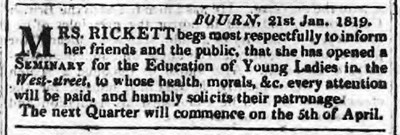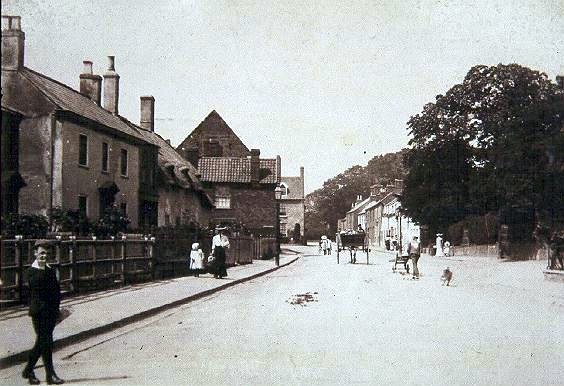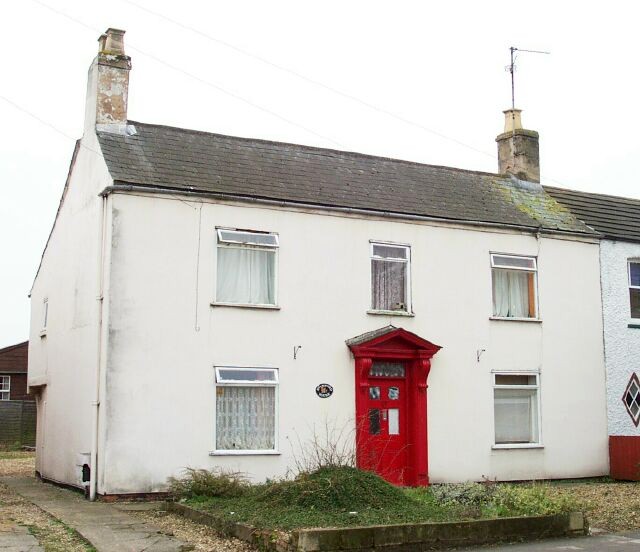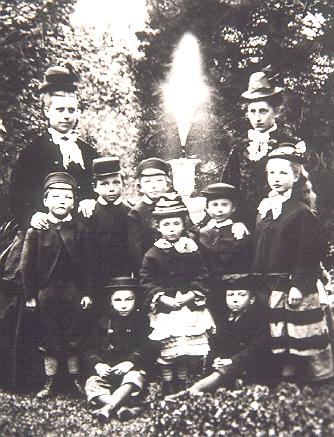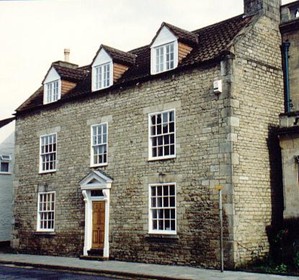|
Private schools in Bourne There are no private schools operating in Bourne today but this was not always so. Prior to the Education Act of 1870, which provided for elementary schools to be built and run by the state, private schools thrived in the town and district although the life of many was short lived. But there was an obvious demand for this type of education, particularly for girls whose parents sought the teaching of certain subjects required in their training to become respectable young ladies. Instruction was therefore given in such matters as social accomplishments, a subject that was not on the curriculum at the National School, the only other available to them because the grammar school was restricted to boys only.
Local records show that in 1810, two sisters, the Misses Munton, ran a boarding school in the town and in 1819 there was another known as Bourne School run by Mr R Sherman and a seminary for the education of young ladies in West Street run by Mrs Rickett. Miss C Osborn also ran a Ladies' Seminary in West Street for day girls but after five years she decided to take in "a limited number of young ladies as boarders". Her advertisement of 13th March 1829 said: "Miss C O begs to assure those parents who may honour her with their confidence that whilst the utmost attention is paid to the health and comfort of her pupils, it will be her constant aim to promote their moral and intellectual improvement. Terms: Board and education, 16 guineas per annum; writing and arithmetic, geography, music, drawing and dancing, on the usual terms." There were many other similar establishments. A Miss Dewey was running a boarding and day school in 1832 and by 1857, there were four private schools in the town, the most prominent being one which operated from the Red Hall for a period of ten years. During that time there were at least three head teachers, Miss Elizabeth Sardeson, who is believed to have founded the school, Mrs Elizabeth West and Miss Elizabeth Wood, although the number of pupils was never large, no more than twenty at any one time. In 1851, for instance, when Mrs West, a widow, aged 54, was head teacher, the census revealed that she had been a schoolmistress for 38 years and that her establishment had five boarder-pupils, one boarder-teacher and one house servant. Teaching was therefore on a very personal basis and the girls would have spent their time studying languages, the classics, history, music and the social graces, all subjects considered befitting for young ladies from well to do families about to enter Victorian society. There was even a private school at Dyke, run by a clergymen who offered his services by advertising in the local newspapers, such as this notice which appeared in the Stamford Mercury on Friday 17th January 1823: "The Rev James Stockdale, B A, receives into his house at Dyke, near Bourne, six pupils (from eight to fourteen years of age) and educates them for commercial purposes, or trade, or prepares them by classical instruction, for a public school, according to the several views of their friends. Terms 32 guineas per annum, including every charge, except for books. The situation is mild and healthy. Business will be resumed on the 27th of January." There was also a private school for young ladies at the Abbey House, the grand mansion adjoining the church which was demolished in 1878. Although originally the home of George Pochin, Lord of the Manor of Bourne Abbots, it was let to various tenants after his wife's death in 1823 until bought by the church as their new vicarage in 1849. In 1843, Mrs West, wife of the tenant at that time, ran her school from the premises and a public notice of July 14th gives an indication of what she offered: "Mrs West respectfully announces that her establishment will re-open on the 31st instant. Mrs W's pupils are instructed in the general routine of English education, including drawing, dancing and the use of globes etc. Terms 20 guineas per annum. Music, singing and French taught by eminent professors, each 1 guinea per quarter extra. A quarter's notice is required previously to the removal of a pupil." Mrs West's establishment was still operating in 1847 when she was advertising "a course of instruction combined with the regular routine of education including French, drawing and dancing" although her fees had increased to £21 per annum for pupils above 10 years of age and £18 for those under 10. These establishments, or at least their proprietors, were often of a transitory nature because a county directory published in 1861 also lists four private schools in Bourne but none of the owners mentioned before reappear. In 1885, Miss Charlotte Layton was running a ladies' school at 61 West Street and there was also a ladies' boarding school at Stamford House, No 75 West Street, owned by Miss Elizabeth Jane Smythe and Miss Mary Chamberlain, operating at the beginning of the 20th century. Another private school for girls based at Austerby House was run by Miss Elizabeth Burrows and was in existence in the early years of the 20th century. The school also had a kindergarten for boys and girls and the curriculum was a general one with an accent on music while many of the senior pupils were successful in Royal Academy and Royal College of Music examinations. This musical tradition was also perpetuated with an annual concert staged for the benefit of the town when pupils were given the chance to show off their skills. An example of their work can be found in this news report from the Stamford Mercury on Friday 17th November 1905: On Friday, the pupils of Austerby House gave an excellent concert in the Corn Exchange before a large audience invited by Miss Burrows. The first part was devoted to the graceful operetta entitled The Flower Queen by George Frederick Root, which was well rendered. The choruses went with a swing and showed how well all had learnt their parts. Especial mention must be made of Miss Oswald who undertook the part of the recluse and sang charmingly, and of Miss Edie Bell, who made a pretty picture as the rose and sustained it well. The dancing of the Harebells was very pretty and was throughout enjoyed both by the audience and by the performers. Part II opened with a bright and well executed tambourine dance. The Misses Pettifor, Pearce and Andrew played a pianoforte trio followed by a duet on two pianos by the Misses Burt and March. An amusing recitation was next given by four kindergarten boys entitled "Our doggie and the doctor" which was encored. Miss March played a piano solo with skill and ease. The Misses Pettifor, Parker and Andrew gave a quartette on two pianos and a recitation by Miss M Berry entitled "Revenge" was well given. The programme ended with another trio by Misses March, Harrison and Burt and "God Save the King" brought a most excellent entertainment to a close. Miss Burrows deserves high praise for the manner in which the pupils performed, for the excellent display of paintings and for the needlework done by her girls which reached a high standard. The scenery was by Mr A Stubley and the names of the performers were: Recluse, Miss Oswald; Rose, Miss Edie Cullis; Crocus, Miss Dorothy Friend; Lily, Miss Gladys Barrand; Carnation, Miss Coro March; Chrysanthemum, Miss May Burt; Violet, Miss Dorothy Essam; Dandelion, Miss Muriel Berry; Poppies, Misses Alice Bell, Eva Lloyd, Jenny Hare, Emmie Parker and Judy Ruffell; Harebells, Misses Gladys and Dreda Pettifor, Katie Andrew and Marjorie Pearce. Private education remained a part of life in Bourne
until the mid-20th century and at the outbreak of the Second World War in 1939, Miss Evelyn Close was running her school for boys and girls from her home
at No 3 Elm Terrace, one of a row of red brick houses just off North Road. Her establishment catered for about 35 children, from toddler age through to 14, with a staff of three. The standard of teaching was extremely high and many pupils left to continue their education at Bourne Grammar School, which was by now admitting girls, while others left to go out to work. This is believed to have been last private school in Bourne but by then, the town was being served by three other state schools spanning the entire age groups for both primary and secondary education that has been built on since to the system that we have today.
REVISED SEPTEMBER 2014 See also An Alien in the Classroom Remembering Miss Close's little school
Go to: Main Index Villages Index |
||||||||||||||||||||||||||
